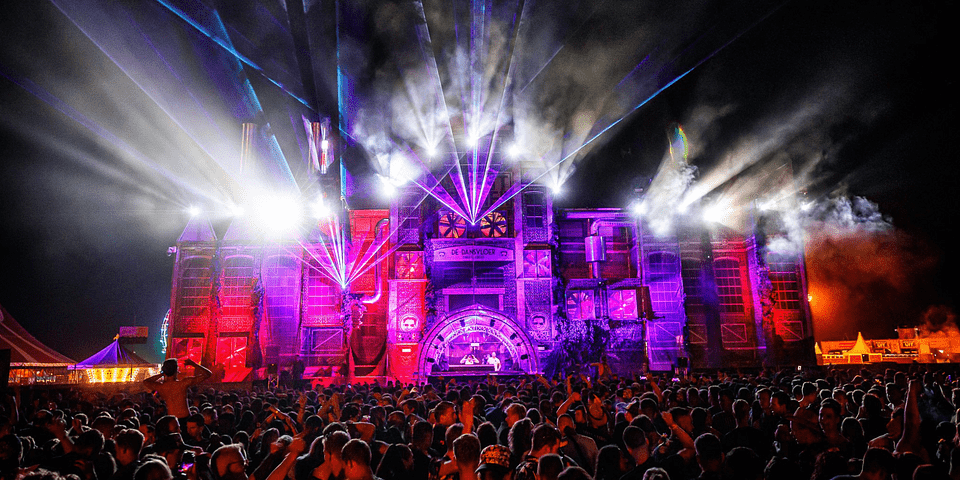With festival revellers moving on from the age of enjoying live music as a means to disconnect from the outside world, gears are starting to shift with attendees expecting to connect and share their experience online. Extreme Networks believes that employing a reliable network does not only benefit audiences but promotes better organisation of a festival. Speaking exclusively to TPi Magazine, Patrick Groot Nueland of Extreme Networks shares how and why investing in better networks creates a meaningful impact, using Zwarte Cross as a case study.
How does investing in better infrastructure and technology improve not only the audience experience, but that of performing artists and behind the scenes teams?
“The network is the invisible headline act of any festival. It has to perform in order to provide an optimal experience for data-hungry festivalgoers wanting to stay connected with their friends and family throughout the event to capture the biggest moments. Secondly, they can use Wi-Fi to access information about the event throughout the day. And third, it gives fans the opportunity to interact with the festival itself, including things like voting for your favourite performers or participating in games and challenges.

“The audience isn’t the only party that benefits from improved infrastructure and wireless technology. Festival staff and organisers can expect better communication across the site and more efficient operations, helping them to stay in touch throughout the day, even when they are in different parts of the festival site. High-speed and secure Wi-Fi connectivity enables festival organisers to provide better services to their commercial customers and partners at events such as mobile concessions, security cameras and more. There’s almost nothing that doesn’t touch the network – which is why its becoming increasingly strategic to create better fan experiences and to streamline operations.
“Additionally, by using platforms like ExtremeCloud IQ, event organisers gain a high level of visibility into network performance and management across the venue, meaning that if there is a network outage, they are able to immediately identify and pinpoint where the outage is and fix it. With ExtremeAnalytics, organisers are able to better understand audience behaviour and drive more personalised and informed decisions around both the fan experience and overall venue operations.
“Elsewhere, for network operators, a major advantage of optimal Wi-Fi connectivity at events is that they can offload network traffic from their 4G/5G networks (also known as LTE), which is especially relevant in areas with limited 4G bandwidth and busy locations like public transport hubs, retail centres, events, festivals or sports venues.”
Why was Zwarte Cross festival a perfect case study and what data was gathered that may influence the approach to networking?
“Being the largest motocross event in the world on top of being the biggest festival in The Netherlands, Zwarte Cross felt like the perfect opportunity to showcase the difference that connectivity makes for all those participating in the festival experience. The world-famous music, arts and motocross festival features more than 250 bands and 34 stages spread across 165 hectares and pulls in over 200,000 attendees every year. With the help of Extreme Networks’ wireless connectivity solutions used to support the event’s Wi-Fi, video streaming and ticketing systems, festival-goers and organisers were able to benefit from a much more seamless, connected experience.
“The sheer size and attendance of Zwarte Cross also made it the perfect site for an OpenRoaming test case, a technology that allows for festival goers to switch easily between 4G/5G and Wi-Fi. The enormous scale of the location, the number of visitors and the fact that the network is temporary, made the Wi-Fi very complex to install and operate and thus perfect for a pilot study. When it comes to OpenRoaming, users expect a frictionless experience and need seamless handover between 4G and Wi-Fi – these components make the pilot highly valuable and relevant. Essentially, the goal of OpenRoaming is to ensure that LTE and Wi-Fi networks work together automatically and securely and this way, improve user mobility. Improved user mobility means ease of use for festival goers.
“Additionally, using ExtremeAnalytics, Zwarte Cross organisers were able to retrieve network engagement data such as peak data usage, the amount of devices connected during the weekend, the most popular apps used on public Wi-Fi, and so on. For example, the analytics tool found that the three most popular apps accessed on public Wi-Fi during the event were Facebook, Snapchat and TikTok. Organisers were also able to identify when data usage hit its peak, which turned out to be when Dutch artist Maan played the main stage on Saturday evening (at 277.39 GB).
“By analysing these different types of data, such as audience patterns, data usage and social media engagement, festival organisers can develop a more strategic approach to networking.”
View this post on Instagram
How is smart networking becoming an increasingly important part of the modern festival experience?
“Smart networking is fast becoming an integral piece of the modern festival puzzle for a number of reasons. First and foremost, it enables attendees to stay connected with their friends and family when in a large crowd. Secondly, smart networking can be used to access information about the event throughout the day. And third, leaning into Machine Learning and AIOps, as offered by Extreme CoPilot, helps augment your busy IT staff. For instance, with AIOps, the network can detect anomalies before they become an issue and help to prioritise tasks for the IT team to focus on. In an era where IT staffing shortages are becoming a bigger problem, this is a game changer for any IT/Networking team.
“There is almost nothing that doesn’t touch the network today. IoT devices, security cameras, switches, routers, access points, applications. That means the network is the central nervous system of operations and it must lean into the intelligence of the network to continuously improve the experience for both IT administrators and festival goers.”
What advice would you offer festival organisers thinking about improving their networking solutions and where should they seek advice and information?
“Festivals and events attract huge crowds of data hungry, mobile-oriented people. That is why it is imperative to understand and manage the mobile and wireless connectivity needs of the event you’re organising. There are three key takeaways:
“The network is the invisible hero, while people can’t see or touch the network, it is a critical part to the consumer experience. For example: Mobile ticketing creates efficiencies and cuts down on queues, mobile concessions are now an expectation, connectivity – every festival goer relies on the network to capture and share the essence of their experience and security which are critical to event operations.
“Secondly, Networking Fabric is key, the ability to connect all of the disparate networks across the festival into ONE network. That means every camera, IoT device, switch, access point can be securely linked and managed in a single place. That makes it easier to manage for IT staff and gain visibility into anything happening across the entire festival.
“Finally, picking the right partner: You need a partner the understands the nuances of running a festival across a large venue. If the network does not perform, you will have a lot of unhappy festival goers. Deployment, testing, management are key. At Extreme, we get in the trenches with our customers to help them ensure it’s a seamless experience from start to finish.”





